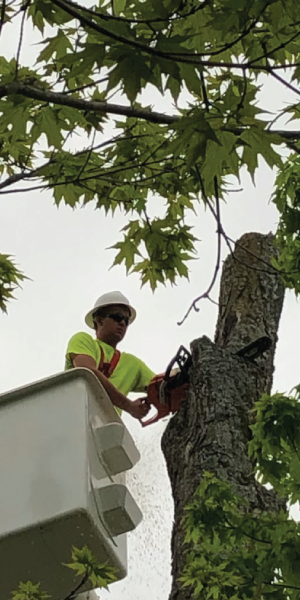How To Help Flooded Trees & Shrubs
Floods can wreak havoc on our surroundings, and one often overlooked victim of these natural disasters is the plant life that sustains our environment. Trees and shrubs, essential components of ecosystems, urban greenery, and even private gardens, can suffer severe damage when submerged in floodwaters. Understanding the symptoms of flood damage, determining whether waterlogged trees or shrubs can be saved, comprehending how flooding affects these plants, and learning how to aid their recovery are crucial steps in mitigating the impact of flooding on our natural landscapes.
Symptoms Of Flood Damage
Recognizing the signs of flood damage in trees and shrubs is the first step towards helping them recover. These symptoms might include:
- Wilting and Discoloration: Leaves might turn yellow, brown, or exhibit signs of necrosis due to waterlogged roots leading to reduced oxygen supply.
- Leaf Drop: Excessive water stress can cause leaves to drop prematurely.
- Root Damage: Root systems can become weakened or even rot due to prolonged exposure to waterlogged conditions.
- Stunted Growth: Flooding can impede a plant’s ability to take up essential nutrients, leading to stunted growth.
- Mold and Fungal Infections: The excess moisture can promote the growth of molds, fungi, and other pathogens that harm the plant.
- Canopy Dieback: The upper parts of the tree might experience dieback as a result of compromised root health.

Can You Save Waterlogged Trees Or Shrubs?
The ability to save waterlogged trees or shrubs depends on several factors, including the severity of the flooding, the type of plant, and the overall health of the specimen. Young and healthy plants tend to have a better chance of recovery than older or weakened ones. Quick action is essential for a successful recovery. If water has receded within a day or two, chances of revival are higher. However, if the flooding persists for several days, recovery becomes less likely.
How Does Flooding Affect Trees?
Flooding affects trees and shrubs in various ways:
- Root Suffocation: Prolonged submersion leads to oxygen deprivation in the root zone, causing root cells to die.
- Nutrient Depletion: Floodwaters can leach away essential nutrients from the soil, starving the plants.
- Soil Compaction: The pressure of floodwaters can compact the soil, further reducing oxygen availability to the roots.
- Pathogen Infestations: Waterlogged conditions foster the growth of pathogens like fungi and bacteria, which can lead to disease.
How To Help Your Plants Recover
- Assess the Damage: Inspect the plants for symptoms of flood damage, and determine the extent of the harm caused.
- Prune Affected Parts: Trim damaged branches and leaves to encourage new growth and prevent the spread of diseases.
- Improve Drainage: If possible, modify the landscape to enhance drainage and prevent future flooding.
- Aerate the Soil: Loosen compacted soil around the root zone to improve air and water movement.
- Avoid Fertilizing Initially: Applying fertilizers immediately after flooding can stress the plants further. Wait until they show signs of recovery.
- Provide Adequate Watering: After the initial period of flooding, ensure that the plants receive appropriate irrigation to help with their recovery.
- Mulching: Apply organic mulch around the base of the plants to retain moisture, regulate soil temperature, and suppress weed growth.
- Monitor Regularly: Keep a close watch on the plants over the following weeks and months to ensure they are recovering well and to address any new issues that arise.
Flooded trees and shrubs might appear to be beyond repair, but with proper care, attention, and timely intervention, many can make a remarkable recovery. As our climate continues to change, floods may become more frequent and intense, making it increasingly important to understand how to help our natural green companions recover from the trauma of inundation. By taking proactive steps and lending a helping hand to our waterlogged flora, we contribute to the restoration of the environment and the health of our ecosystems.

